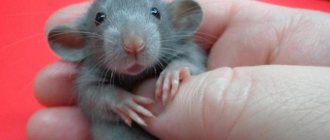Features of street animals
First of all, take into account the fact that a kitten hisses at people and is afraid if it was born on the street and did not live near them. But even such an animal can be weaned from displaying aggression if effective methods are used. Remember - it is much easier to instill trust in a person in a small kitten than in an adult pet.
A mature cat most often hides in various basements, his character has long been formed, and teaching him good manners is not as easy as it might seem at first glance. Such animals are afraid of people, scour landfills in search of food and become too aggressive, as they are often forced to defend their lives in fights with other homeless animals.
The fact that a kitten or a grown-up pet sits still when it sees a person and is not too afraid of you indicates that it was most likely kicked out into the street. Pay attention to the fur: if it is clean, not tangled, and looks well-groomed, then you have a cat that already had a family and could have been on the street only recently. In any case, if you decide to pick up a kitten or even a wild cat from the street, be patient: he will definitely scratch, damage furniture and play mischief in the house. However, with proper care and education, you can instill good manners in him.
We recommend this article:
How to properly care for a kitten at home
How to accustom a kitten to being held?
The classic idea of a domestic cat is a warm furry ball curled up in your arms, purring in different tones. But some pets are too independent, not very affectionate and do not strive for intimacy with humans. And then the owner is faced with the question of how to accustom the cat to handling.
There are several methods to help overcome fear or reluctance to handle.
- After a hearty meal, the pet is relaxed and sleepy. You can pick up a dozing kitten and gently cuddle it to keep it warm and cozy. After a short time, the baby will begin to climb up to the owner on his own.
- Treats will help lure the kitten onto the person's lap. While he is eating, you need to gently stroke him and scratch him behind the ear. Gradually, the pet will understand that sitting in your arms is pleasant.
- While playing, you need to pull the toy onto your lap from time to time. When the kitten jumps after you, you need to pet him. Over time, he will get used to close contact with a person and will strive for it himself.
Games bring people closer together
- Perhaps the cat is simply afraid of heights due to the fact that he was picked up incorrectly. In order for the baby to feel comfortable, one hand is placed under his front paws, and the other is placed under his hind paws. You shouldn't hold the kitten up; it's better to lightly hold it close to you.
When using one method or another, you need to carefully monitor your pet, and the right path to training will definitely be found.
Nuances of catching
Adult cats are afraid of humans and it is not easy to catch them. As a rule, at the sight of animal shelter workers, these creatures flee for their lives, hiding in bushes, basements and other nooks and crannies. That is why, if you decide to catch a cat, take with you an old blanket or a fishing net.
When your catch is in the nets, take it home and place it in a box prepared in advance for this purpose. Place a regular tray not too far away - let the animal sniff and get used to it a little. If possible, allocate a separate room for the newcomer or place him in the bathroom. Let him stay in a closed area for the first time: this will help him relax a little. If you have a small apartment, place the kitten in a cage and cover it with a blanket. In any case, your main task is to create a calm environment for the animal.
We recommend this article:
How to easily train a kitten or adult cat to go to the litter box
Problems in a well-functioning mechanism
It often happens that a little fidget, seemingly already accustomed to one place and its own tray, “forgets” about it and begins to “walk” under the closet or to a secluded corner on the carpet. We definitely need to fight this.
- You should not use the old-fashioned method (poking with your nose and dragging it into the tray). Such actions will certainly form a negative attitude towards the allocated place, which will only aggravate the situation. It will be enough to scold the kitten slightly. Cats are good at distinguishing intonation, so the scoundrel will quickly understand that he did something wrong.
- Excrement should be removed as soon as possible, and it is best to use a special spray or liquid that removes stains and odors, so that in your pet’s memory the new place is not associated with the toilet. The collected “goods” can be sent to the tray, thereby showing, including by smell, where they should be.
Sorry, there are no products matching your search parameters in this category.
Establishing contact and adaptation
After you have picked up the kitten and brought it into your apartment, leave it alone for a while. He must get used to the new environment and get hungry. After three hours, go to the cage and start talking to the animal in a calm, gentle voice. Be sure to offer him some kind of treat (a piece of food or fragrant chicken). The main thing is that the cat must take the food directly from your hands. If the kitten bites and refuses to do so, do not insist. In this case, it is better not to approach for some time. First of all, the kitten must realize that now you are its breadwinner and friend. In addition, during this time he will get pretty hungry and will take a treat from your hands.
When the feral kitten has calmed down a little, open the cage and gently reach out to him, not paying attention to his hissing. If an animal tries to hit you with its paw, brush it off - let it see who’s boss. Wait until the cat stops responding to your movements and give another treat, but do not put the food dish down.
After 15 hours, the tailed baby will be hungry enough to leave the cage on its own and take the goodies from your hands. If this happens, move carefully and calmly: any sudden movement or loud voice will frighten him. Hold the food in your hand, stroke your pet with your free hand, and then feed it.
We recommend this article:
How to properly raise an obedient and tame kitten
Tidbit or gingerbread method
Education is an entertaining process, especially when there is a return.
So, this same return can be obtained twice as fast if you use incentives for each successfully completed task. This could be a favorite treat: a piece of sausage, a piece of chocolate, the main thing is that the kitten really wants it at a specific period of time. By the way, you can always carry a tasty morsel with you, in the pocket of your robe or trousers, and start training with your pet at any time when there is an opportunity and the “student” is in a favorable mood.
As soon as the animal appears in the field of view, they beckon it to you with their fingers, while pronouncing the invented name out loud (by the way, all household members of the kitten should call it the same so that the poor thing does not get confused)
When the baby deigns to pay attention to the owner and comes up, he is treated to a “delicacy”, gently scratched behind the ear or patted on the back, continuing to click on the name
Over time, it will be enough to simply call the baby so that he runs up to his beloved owner. It is not forbidden to give treats from time to time, otherwise the conditioned reflex will fade away as quickly as it appeared: they say that I will run to you if you cannot offer anything.
Taming Rules
If a cat is not given to a person at all, it is necessary to accustom it to contact gradually.
Pour food into a bowl and place it outside the cage - this will force the kitten to come out of its hiding place. Then gradually move the bowl to the middle of the room. When the pet begins to move further, try petting it and then feed it.
The next stage in taming an animal is the tray. Stray cats relieve themselves on the sand or ground. That's why fill your cat's litter box with sand first. Every time the kitten starts to fuss, put him in the litter box. Thus, he will soon understand what his purpose is. Over time, replace the sand with purchased filler. Of course, sometimes cats are so stressed that they may urinate in inappropriate places. But any experience is temporary.
Popular harness models
Table 2. Comparative characteristics of cat harness models.
| Name | Characteristics | Dimensions | Advantages | Flaws |
| Model from TRIXIE | Harness with stripes that reflect light. The set includes a leash, which is attached to the harness with a durable metal carabiner | Strap width – 1 cm. Chest circumference – 22×42 cm |
| Flashing stripes can frighten an animal |
| Model from ReflectoCat S Rogz | Made from polyester. The set includes a leash, the length of which is 1 m 80 cm. The fasteners are made of acetate plastic. They are very strong. When opened, the animal's fur does not come off and is not damaged. The carabiner connecting the leash to the harness opens with significant tension. This allows you to unfasten it when the animal climbs a high fence and tree. The product is bright, beautiful, the set includes bells | Strap width – 1.1 cm. Size – S |
|
|
| Model from DEZZIE, created for kittens | Nylon based material. The set includes a leash 1 meter 20 cm long | Strap width – 0.8 cm. Chest circumference – 21×34 cm. |
| |
| Model Hunter Smart from Strips | Made from nylon. The kit includes a leash 120 cm long. The dimensions are adjusted using plastic sliders on the slots | Strap width – 0.8 cm. Chest circumference – 22×46 cm, neck – 22×33 cm |
| Narrow straps |
| Trixie model for kittens and small cats | Made of artificial leather. The set includes a leash 1.2 m long | Strap width 0.8 cm. Chest circumference – 22×32 cm, neck – 22×28 cm |
| You will have to buy a new harness when the animal grows up |
The basic rule for walking furry pets is that the cat is not the owner. The cat must walk the owner. Therefore, do not pull the leash or drag the animal in the opposite direction. If this place is dangerous, just pick him up and take him to another place. You should not prohibit your pet from exploring the territory.











